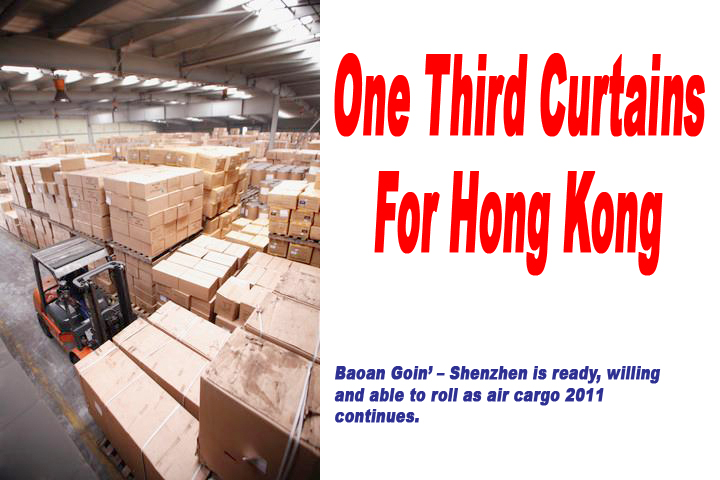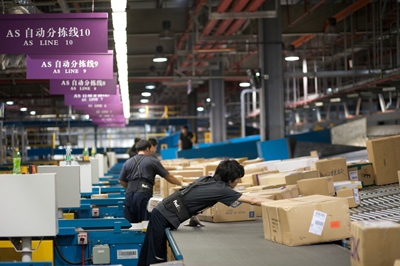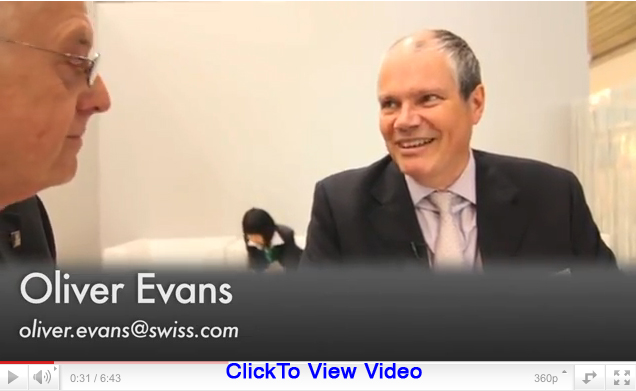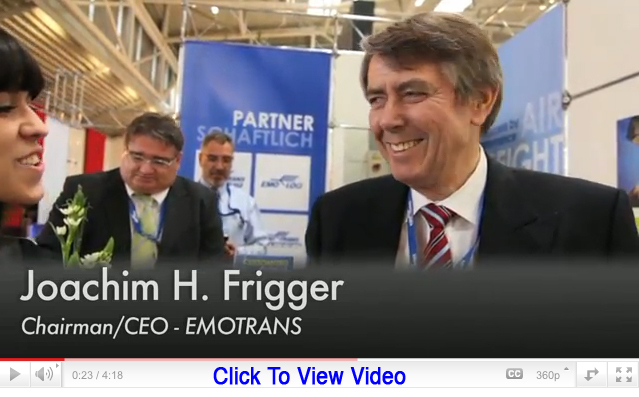| 
In some quarters, capacity sharing partnerships
between HKIA and airports in southern China have been advanced as an
alternative to HKIA moving forward with plans to build a third runway.
Cathay Pacific has been rather outspoken on the issue, pointing out
quite reasonably that Shenzhen and Hong Kong have separate governments,
border controls and administrative systems. They also have different
currencies, immigration requirements and air services agreements, not
to mention leading operators and stakeholders.
 “Even
if the challenges outlined above could somehow be resolved, there’s
no reason to think that the other PRD airport hubs would surrender their
runway capacity to Hong Kong. All of the PRD airports are in competition
and this is good for passengers and other users,” said Cathay
in one statement. “Even
if the challenges outlined above could somehow be resolved, there’s
no reason to think that the other PRD airport hubs would surrender their
runway capacity to Hong Kong. All of the PRD airports are in competition
and this is good for passengers and other users,” said Cathay
in one statement.
As HKIA weighs up its expansion options,
the truth of the matter is that competition between Hong Kong and its
Mainland rivals is fierce now and will intensify in the coming decade.
As previously reported here, the Pearl
River Delta region of southern China produces over 25 percent of the
country’s exports and is responsible for more than 10 percent
of national industrial output. Over the last decade HKIA has retained
its dominance of air cargo uplift from the region, a dominance that
helped it become the world’s leading cargo airport in 2010. But
its cross-border rivals of Guangzhou (CAN) and Shenzhen (SZX) are making
inroads.
CAN saw volumes rise almost 20 percent
in 2010 to 1.14m metric tons, helping the airport retain its status
as the 21st largest cargo airport globally, according to figures from
Airports Council International. Shenzhen, meanwhile, is now the 24th
largest and one of the fastest growing cargo airports in the world,
handling some 809,363 tons in 2010, a year-on-year gain of 33.6 percent.
Both airports have ambitious plans to
expand by building additional runways and already boast the presence
of major hubs operated by leading carriers – UPS at SZX and FedEx
at CAN. The two logistics majors have been highly vocal about the service
benefits that have been possible since the hubs were established. Both
airports are now also improving service levels, supported by strong
investment in hinterland infrastructure from regional and federal authorities.
 Alwyn
Mendonca, (left) Managing Director for South China and Hong Kong at
GAC, said these efforts are now bearing fruit. In the past, 90 percent
of GAC’s airfreight cargo was handled at HKIA because it was the
most cost-effective option, especially since GAC builds its own units
in Hong Kong. Alwyn
Mendonca, (left) Managing Director for South China and Hong Kong at
GAC, said these efforts are now bearing fruit. In the past, 90 percent
of GAC’s airfreight cargo was handled at HKIA because it was the
most cost-effective option, especially since GAC builds its own units
in Hong Kong.
“However,” he added, “we
are gradually seeing more cargo moving directly through Guangzhou and
Shenzhen as customs in Southern China becomes more efficient. For every
shipment, we carefully evaluate all options to find the best, and most
cost-effective, way to get the cargo to its final destination.
“There has been considerable improvement
in customs services at both CAN and SZX in the past few years. Paperless
export declarations are now a reality for some general cargo, depending
on the commodity, and it is now possible to complete the process within
a day.”
Christian Hein, Vice President for air
freight Product Management in the Asia Pacific at Schenker, said improved
customs services were seeing more cargo directed to CAN and SZX, a trend
he predicted would accelerate.
“There are more domestic and international
carriers calling into these two airports now and they offer good connections
overall,” he added.
“There are increasingly more customers
requesting us to operate directly out of these two airports due mainly
to their proximity to manufacturing operations, and to a certain extent,
an increasingly influential and sizeable consumer market.
 “Though
the fuel surcharge level is higher than Hong Kong, the overall freight
rate all-in is still competitive.” “Though
the fuel surcharge level is higher than Hong Kong, the overall freight
rate all-in is still competitive.”
Robert Timmerman, (right) Area Manager
Greater China at Panalpina, said that although airfreight rates were
attractive from mainland airports, add-on fuel and security surcharges
ultimately aligned pricing with HKIA. “The
fact is that the carrier portfolio in both Shenzhen—mainly served
by Jade Airlines to date, and Guangzhou, which sees a diversified portfolio
going forward, combined with the expanding China Southern fleet including
Boeing 777 freighters—will allow us to provide direct lift from
and to Mainland China to support the growth.
“Hong Kong, however, will retain
its strengths in view of the local trading solutions available and successfully
conducted for years.
“A dilemma going forward related
to airlifting through Mainland airports are the restrictions related
to second customs’ bond transfer. This cannot be conducted at
present. If the Logistics Provider could build Aircraft ULDs themselves
this would substantially increase control and thus reduce exposure on
damages.”
 Andy Weber, (left) President of Kuehne
+ Nagel Asia Pacific, said CAN and SZX still lacked sufficient route
coverage, flight frequency and airport cargo handling options, but had
a speed advantage over HKIA in terms of accessing factories in the PRD
because of overland transit times.
Andy Weber, (left) President of Kuehne
+ Nagel Asia Pacific, said CAN and SZX still lacked sufficient route
coverage, flight frequency and airport cargo handling options, but had
a speed advantage over HKIA in terms of accessing factories in the PRD
because of overland transit times.
“Buyers increasingly demand high-speed
delivery of products or components, and the time lost can constitute
a competitive constraint,” he explained.
“This would suggest that Hong Kong’s
future as a key air-cargo hub will heavily depend on its capability
in providing speedy intermodal transports by land, sea or air between
Hong Kong International Airport and the factories in South China.”
The final word on competition between
HKIA and southern Mainland China rivals goes to Hein: “An additional
runway [at HKIA] would definitely enhance competitiveness. Nevertheless,
the competition between HKIA and other South China regional airports
is keen and will remain so for years to come.”
Sky King |





![]() 100%
Green
100%
Green